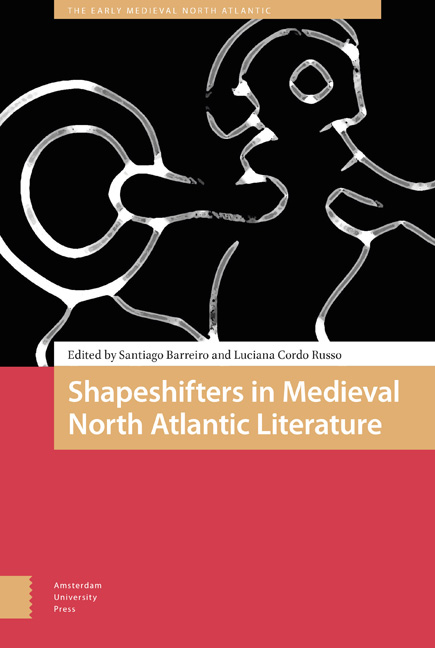Book contents
- Frontmatter
- Contents
- Acknowledgments
- Introduction: Medieval Thought and Shapeshifting
- 1 Wundor wearð on wege‘a wonder happened on the way’: Shifting shapes and meanings in Old English Riddles
- 2 The Big Black Cats of Vatnsdalr and Other Trolls: Talking about shapeshifting in medieval Iceland
- 3 The Hoard Makes the Dragon: Fáfnir as a Shapeshifter
- 4 Eigi í mannligu eðli: Shape, Monstrosity and Berserkism in the Íslendingasögur
- 5 The Cursed and the Committed: A Study in Literary Representations of ‘Involuntary’ Shapeshifting in Early Medieval Irish and Old Norse Narrative Traditions
- 6 Unde sunt aues istae?: Notes on Bird-Shapeshifting, Bird Messengers, and Early Medieval Hagiography
- 7 Sin, Punishment, and Magic: Changing Form in Medieval Welsh Literature
- Index
1 - Wundor wearð on wege‘a wonder happened on the way’: Shifting shapes and meanings in Old English Riddles
Published online by Cambridge University Press: 16 February 2021
- Frontmatter
- Contents
- Acknowledgments
- Introduction: Medieval Thought and Shapeshifting
- 1 Wundor wearð on wege‘a wonder happened on the way’: Shifting shapes and meanings in Old English Riddles
- 2 The Big Black Cats of Vatnsdalr and Other Trolls: Talking about shapeshifting in medieval Iceland
- 3 The Hoard Makes the Dragon: Fáfnir as a Shapeshifter
- 4 Eigi í mannligu eðli: Shape, Monstrosity and Berserkism in the Íslendingasögur
- 5 The Cursed and the Committed: A Study in Literary Representations of ‘Involuntary’ Shapeshifting in Early Medieval Irish and Old Norse Narrative Traditions
- 6 Unde sunt aues istae?: Notes on Bird-Shapeshifting, Bird Messengers, and Early Medieval Hagiography
- 7 Sin, Punishment, and Magic: Changing Form in Medieval Welsh Literature
- Index
Summary
Abstract
The aim of this chapter is to discuss both individual instances and mechanisms of shapeshifting present among the Old English riddles of the Exeter Book as well as to emphasize the fact that shapeshifting is the fundamental compositional principle of the riddle form. The essence of literary shapeshifters and the essence of riddles lie in the elusiveness of their meanings and in the intention to deceive those that come in contact with them. Much as narrative shapeshifters require action from those whom they encounter, the Old English riddles invite their audiences to interact with their protean meanings. In doing so, both narrative shapeshifters and riddles provide a heightened sense of awareness and a deeper insight into the elements of reality they respectively affect and attempt to depict.
Keywords: Old English, Exeter Book, riddle, shapeshifting, linguistic transformation, trickery
Shapeshifting is manifestly ingrained in Old English culture, both visually and textually. Lines and patterns, as well as words and meanings, appear to be not only in motion, but they also seem to blend and morph into one another and into other forms and senses. Geometric shapes of numerous Old English carvings, filigree, and manuscript illuminations weave themselves into phyto-, zoo- and anthropomorphic figures in which it is impossible to state where precisely one shape or outline becomes another. The elusiveness and fluidity of the designs present in Old English visual culture on the one hand, and the distinct fascination with the interlace art on the other have been noted to resemble structural patterns of Old English poetry, at least since John Leyerle's 1967 essay on the interlace structure of Beowulf, and critical discussions of the visual aesthetics as reflected in Old English literature continue to be penned and continue to offer varied angles on Old English poetics. Notably, however, the surviving Old English literature lacks the kind of shapeshifting which may be found for instance in Old Norse texts, that is it possesses few examples of the literal shapeshifting occurring in narrative poetry. Partly responsible for it may be the fact that its themes are overwhelmingly Christian and therefore we will not find among them any of the shapeshifting figures familiar from, for instance, Eddic poetry, or, say, the draugar familiar from the sagas.
- Type
- Chapter
- Information
- Shapeshifters in Medieval North Atlantic Literature , pp. 21 - 42Publisher: Amsterdam University PressPrint publication year: 2018



